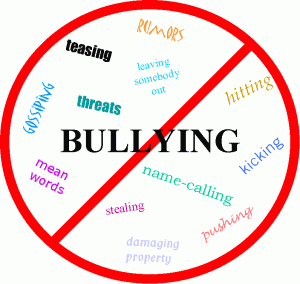We are awash in stories about bullying, including bullying that takes place online. How did we get to a point in which individuals are able to insult, intimidate and break down others mentally and physically, without even being in their presence? Or maybe they are in their presence. It seems that our virtual connections have created a world in which when we are not with each other, we sort of are.
These stories of young people, from pre-teens to college students, experiencing such suffering are heart- wrenching and maddening. I am still bothered by the passing of Alexis Pilkington, a young lady to whom I was connected only through our Long Island roots and love of soccer, and the suicides of those who, at the very least, were put into vulnerable positions by this new strain of bullying. Their deaths have sparked in me and so many others sadness reserved for a close friend. Young lives should not be lost in any way, let alone in a manner in which they leave this world with feelings of isolation, hopelessness, and fear.
Isn’t our youth the time when we are most connected and carefree, full of courage and hope? Our personal interactions come fast and furious because of school and outside activities such as sports. Strong relationships are being built on shared activities and experiences, such as going to practice, playing in games, and even just taking part in some pick-up. Having teammates, coaches, fans and even opponents creates a special, supportive environment for everyone involved.
Today, the new “relationships” we are in are many in number but minor in significance. (1,000 friends on Facebook. Really?) IMing, texting, and emailing are not the foundations of friendship, they are but facilitators. They certainly do not creative a supportive environment for everyone involved. And this lack of support and real connection has created fertile ground for this new type of bullying. Cyberbullying is ever-present, all encompassing, and can exact a whole other level of meanness. And unfortunately, many young people are measuring their self-worth by the level of (mis)treatment they receive.
I was a target of bullying years ago but fortunately had friends, family, and teammates who saw the bullying as an affront to them. “Target one of us, target us all,” was the feeling. And I was emboldened by that feeling. At that time, I didn’t need 100 okay “friends”, but rather 10 great ones, and I found that in my friends/teammates. Since then, whether as an athlete, business professional and now sports management professor, I’ve had the opportunity to build off of those experiences and share the many positives of sports, e.g. social support, goal setting, teamwork, and meaningful relationships.
Sports, admittedly, has not been a safe haven from bullying, whether done by “dumb jocks” or via hazing rituals which clearly cross the line from good-natured bonding tasks to criminal activity. (We must all be better teammates in that regard.) However, it cannot be disputed that sports can and should be a haven for fun, support, encouragement, and a sense of community, all of which are not associated with bullying but are inherent in the games we love so much. When we are connecting through sports, we see the best in us, and sometimes the not so good. But we see it, we feel the interaction in a larger context. Bullying, especially cyberbullying, is at its core isolating, having the victim physically and emotionally removed from the life they want to lead.
It’s clear that there is no one solution to this disturbing rise in bullying. Punishing those whose behavior creates such fear and heartache is a good step. But we must do more, something that creates lasting change. We need to be there for those who suffer, to be their teammates. Having that connection enables us – individuals, families, and communities – to stand up and say in the face of bullies, “Target one of us, Target us all.”




Recent Comments